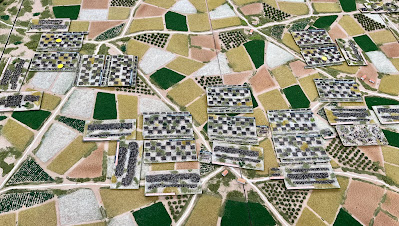I spent the day in Portsmouth, mainly visiting the historic dockyard. I vaguely remember visiting HMS Victory before on a school trip, but that was a very long time ago.
The site is mixed in with the modern naval base, so as an added bonus, HMS Iron Duke (Type 23 frigate) was in port. I started with a visit to HMS Warrior, which, when launched in 1860, was the world's fastest, largest, and most powerful warship. As one of the crew put it, an armour-plated deterrent to the wicked French. Out of earshot of the French tour party behind me!
The next stop was the Royal Navy Museum. A special Nelson exhibition and lots of ship models, paintings etc. A few dioramas, including a landing by boat in a Mediterranean harbour, which looks a lot better than mine, if more compact. I doubt you could game on this one.
 |
| The classic Nelson dying at Trafalgar painting. |
 |
| The 4” Gun from HMS Lance that fired the first shots of the war at sea in WW1. |
 |
| This collection of naval games will test a few memories! |
HMS Victory would have called most visitors next. But needless to say, I went for the Balkan interest. The monitor HMS M.33 was the only surviving Royal Navy warship from the Gallipoli campaign. Built in just 10 weeks, it fired 316 shells at the Ottoman artillery positions. Good gun platform but a bumpy sail.
HMS Victory is being refurbished, so the visitor experience on the outside is limited. However, there is full access inside. But, mind your head, I didn't.
 |
| I couldn't resist Nelson's loo. |
And finally, the Mary Rose. I remember watching the live TV footage of them raising the Mary Rose. Fantastic to see it preserved along with the contents. Including the longbows.
I was going to take the water bus to Gosport and the Submarine Museum, but that wasn't going. So instead, I walked down the coast to Southsea and the D-Day Story. The main attraction is a Landing Ship Tank, but they also have other vehicles and displays inside and the impressive D-Day tapestry.
Next to the D-Day Museum is Southsea Castle. Built by Henry VIII to protect Portsmouth Harbour. The deep channel goes under its guns. He watched the Mary Rose sink from here, according to a print of the period. It was still in use by WW2, although mainly for AA. This reminds me it is pretty remarkable that HMS Victory survived being bombed in both world wars.
I walked back to Portsmouth along what looked like a new promenade. The route is dotted with war memorials. The biggest is the majestic Naval War Memorial. You also get a good look at the harbour defences.
Overall, an excellent day.





















































